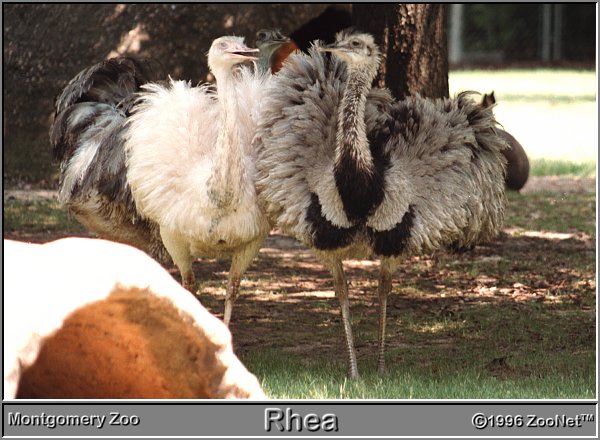
Rheas are the South American relatives of ostriches - like ostriches, they cannot fly but are strong runners, with long legs and necks. There are two species - the Common or Greater Rhea, which lives in the pampas, and Darwin's Rhea, which has been found in the Andes mountains at elevations up to 5000 metres. The Common Rhea is the largest American bird, standing up to 160 cm tall and weighing up to 25 kg. Fossil rheas have been dated as old as 50 million years.
Rheas are primarily grazers, but will also eat insects, lizards, and small mammals when these are available. They often join other grazing animals, such as deer or domestic cattle.
Male rheas fight each other for breeding rights. A victorious male may acquire a harem of six to eight females, each of which lays up to 15 eggs into the nest prepared by the male. The nest is simply a hollow in the ground. The male incubates the eggs and cares for the chicks until they are almost adult at four to five months.
